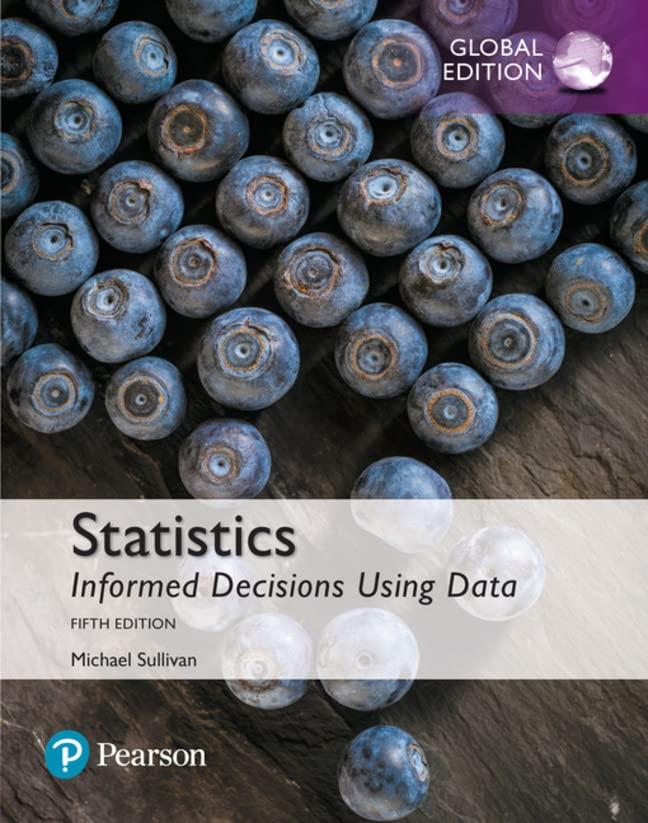Our number system consists of the digits 0, 1, 2, 3, 4, 5, 6, 7, 8, and
Question:
Our number system consists of the digits 0, 1, 2, 3, 4, 5, 6, 7, 8, and 9. Because we do not write numbers such as 12 as 012, the first significant digit in any number must be 1, 2, 3, 4, 5, 6, 7, 8, or 9. We may think that each digit appears with equal frequency so that each digit has a 1/9 probability of being the first significant digit, but this is not true.
In 1881, Simon Newcomb discovered that digits do not occur with equal frequency. The physicist Frank Benford discovered the same result in 1938. After studying lots and lots of data, he assigned probabilities of occurrence for each of the first digits, as shown in Table 5. The probability model is now known as Benford’s Law and plays a major role in identifying fraudulent data on tax returns and accounting books.

(a) Verify that Benford’s Law is a probability model.
(b) Use Benford’s Law to determine the probability that a randomly selected first digit is 1 or 2.
(c) Use Benford’s Law to determine the probability that a randomly selected first digit is at least 6.
Approach For part (a), verify that each probability is between 0 and 1 and that the sum of all probabilities equals 1. For parts (b) and (c), use the Addition Rule for Disjoint Events.
Step by Step Answer:

Statistics Informed Decisions Using Data
ISBN: 9781292157115
5th Global Edition
Authors: Michael Sullivan





